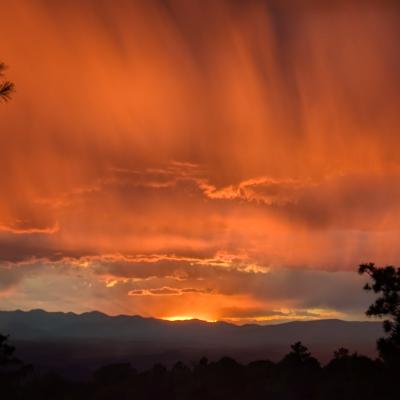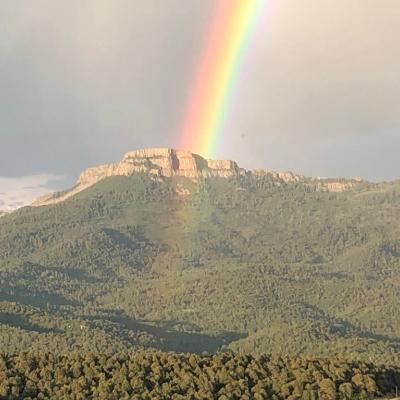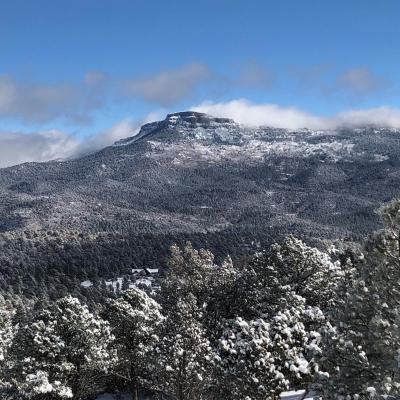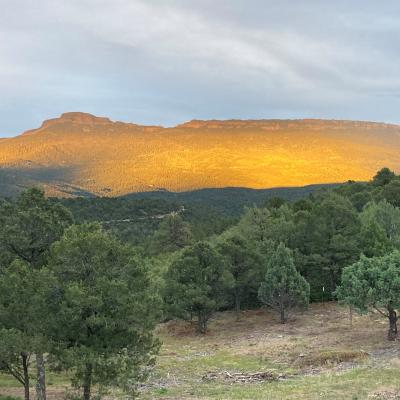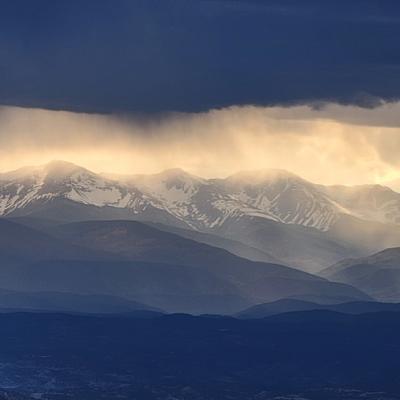History
Profiles In Ranch History - Vern Jaschke
Profiles In Ranch History - Vern Jaschke
Many of us have heard of Vern and know that he surveyed the Santa Fe Trail Ranch, but, like me, have never met him. I had heard that Vern was in his 70’s, so I was very surprised to find a much younger-looking man at my door on the date scheduled for our interview. This man looked to be nearer my age (mid-50’s) than the actual 74 that he was. But then, it is said that plenty of exercise keeps you young and fit, and Vern gets plenty of that.
Besides surveying the ranch, Vern was also the designer of our water system, currently under construction. Vern likes to keep an eye on the progress, so it was for this reason he said he’d drop by my house after he took a look at the water line which was currently coming down my road.
Even before I got Vern situated at my kitchen table with a cup of coffee and a plate of fruit newtons, he was in the middle of telling me the history of southeast Texas where his family ranch is located. His great grandfather came over from the part of Germany that was once called Prussia in 1848, just in time for the last great Comanche raid. He started a cattle ranch in Victoria, located between Houston and Corpus Christi, where Lavern Jaschke was to be born in 1925.
Vern rode a horse to school and helped out on the ranch. It was during the depression and times were tough. His parents bought a horse for him for $6.00 when both the horse and the boy were six years old. Vern rode Billy to school every day until he graduated from high school, then he joined the Army. It was while he was away that Billy died after a long life of 21 years.
It was 1942 and it was simply a given fact that every boy who was old enough would enlist to fight for the country. There was practically no one who didn’t understand that Hitler was a thug, and along with what Japan was up to, our country was seriously threatened. So Vern found himself serving most of W.W. II in Europe in the Code and Decipher Section of Supreme Headquarters. He was assigned to work as Eisenhower’s personal courier along with another young chap, and they delivered personal and official messages from this one famous general right to the hands of other famous generals such as Patton, Bradley and Montgomery. Before the war ended, Vern, not wanting to miss some exciting real action, volunteered for the invasion of the beaches at Normandy. Then the war was over. Vern says he never got beyond the rank of private because he couldn’t follow orders. Whenever a superior officer would yell at him, Vern would tell him not to do that because he didn’t take to being yelled at, coming from the quiet plains of Texas. Vern says he never did learn to take orders, which has occasionally gotten him labeled as a trouble-maker.
In 1946, after the war, Vern resumed his education under the GI bill at the University of Texas, where he studied engineering. That year he also married his first wife Patricia, whom he met in Denver. Together they raised son William and daughter Carolyn until Patricia died in 1977. From then on, he said it was a full time job raising two wild teenagers, and he didn’t get around to remarrying until recently. He married his present wife Lydia just three years ago.
Vern’s engineering career has taken him from Illinois to Indiana, where he helped design and build many of the interstates and bridges there. Then he went on to Denver where he owned an engineering firm. He did a lot of work for Colorado Governor Roy Romer and ended up being responsible for many of the sub-divisions in the Denver area. He retired for a while, but not for long, and moved to Trinidad six years ago.
Charles Baldwin was beginning to develop the Santa Fe Trail Ranch around 1992. A group of Texas investors owned the land and they hired Baldwin to develop it because he had the equipment and the know-how to put in the roads and market the land. Baldwin was using Vern’s associate at first. Then, after Units 1 and 2 were laid out, Vern took over, surveying the rest of the ranch.
Vern says the ranch was indeed wilderness at the time. He would see huge flocks of turkeys, as many as 200 at a time, and he once saw five bears in a group together. Cougar Court got its name when Vern saw a mountain lion strolling along the ridge, completely fearless of the presence of humans. Vern only got to name a few of the roads: Rich Babnick and Charles Baldwin named most of them.
It was a physically arduous task surveying the ranch. Vern recalls one winter day in 1992 when it was below zero and they were out surveying in snow three and four feet deep, and the heater in his truck wouldn’t work. There probably is not a square foot of this ranch that Vern has not climbed up, scrambled down, trod over, or crawled under scrub to get to, in order to pound in those little round corner markers on each of our individual parcels. Vern says the roads were put in first, and then he would visit every lot before laying out the survey lines so that he could locate at least one good building site for each lot. That’s a lot of hiking anyway you look at it.
Vern talked about the history of the ranch as easily as he did about Victoria, Texas. He says that in the early days of the Santa Fe Trail, David Wooten had a toll road over the pass near what is now Exit 2. Folks who didn't like forking over money to Wooten would turn up Cottonwood Canyon, then come down a trail which followed the same ridge as the present Owen Baldwin Parkway, then up Gallinas Creek and over into New Mexico to pick up the Santa Fe Trail again. Another interesting tidbit Vern shared with me was that the whole southern border of the Ranch that is shared with the Vermejo Park Ranch is 2600 feet south of where Congress had ordered the Colorado-New Mexico border to be drawn. Why? The guy who surveyed it made a mistake! (I wonder if New Mexico will ever want it back?)
Besides the laying out of the roads and lots on the ranch, Vern also designed the water system that Baldwin wanted for the early development. He says that the ranch has some very dependable water sources should we ever need to develop them. When we decided to bring city water to the ranch last year, Vern then adapted the water system design to incorporate the city water as its source of supply. Just read Tom Stephens articles about the building of this system and you’ll be able to appreciate what went into the designing of it.
We all have Vern Jaschke to thank for much of what is the Santa Fe Trail Ranch. From the building of its road system, to the layout of the lots, up to the design of the new water system, Vern has been behind it all. Next time you’re out driving the roads, exploring the ranch or crawling under bushes, climbing up steep rocky slopes searching for your corner markers, remember that Vern was there first.
-- by Carol Rawle, July 1999

